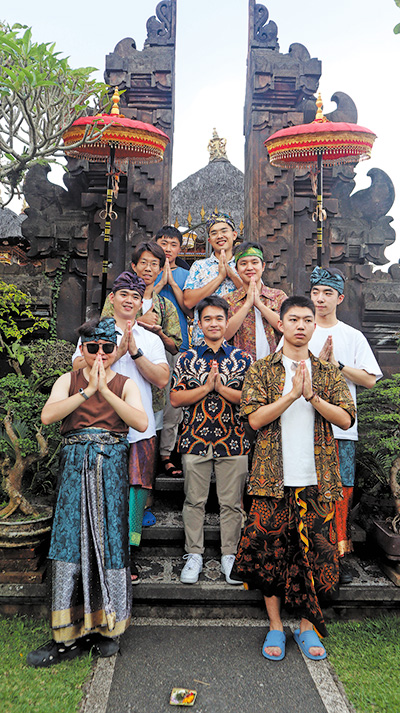Students' journey to empower rural heritage


"I believe that the culture and architecture of Indonesia's traditional villages possess a unique authenticity with the potential to shine on the global stage," I expressed to local residents during our visit to villages in Nusa Tenggara Barat (NTB), a province in southeastern Indonesia.
From Aug 18 to 22, a team of 15 Tsinghua University students, representing diverse backgrounds from China, South Korea, Malaysia, and Indonesia, embarked on an overseas research expedition focusing on rural revitalization in Indonesian villages, particularly within NTB.
With the diverse cultural heritage, Indonesia is home to more than 83,000 villages, each radiating its own charm and character. While these villages possess undeniable allure, many remain underdeveloped, and their inhabitants often endure poverty.
Our research mission took us to Sukarara and Sade villages, two of NTB's tourist destinations. Both of them have been selected for revitalization efforts led by the Village Revitalization Team of Tsinghua University.
Sukarara and Sade are a world apart from the bustling metropolises to which most of us are accustomed. The villages are a living testament to Indonesia's rich cultural tapestry and its commitment to preserving traditions.
In Sukarara, for example, a long-standing tradition dictates that girls master weaving skills before marriage, a critical factor for prospective suitors. Girls as young as seven years old commence their weaving education, and this skill becomes a lifelong pursuit. The commitment required to produce high-quality traditional fabric, adorned with intricate patterns, is substantial, with almost a month needed to craft a single meter of fabric. These talented weavers sell their meticulously crafted products within their communities, fetching prices ranging from IDR 100,000 ($6.36) to IDR 500,000.
And in Sade, architectural marvels captivate many visitors. The houses boast floors covered in buffalo dung, a measure to prevent dust and enhance durability. Thanks to their woven bamboo architecture and reed roofs, this unique choice makes them insect-resistant and earthquake-proof. As we admired these remarkable structures, we recognized the immense value in preserving such traditions and architectural wisdom, while also seeking ways to improve living conditions for the villagers who call these places home.
While simultaneously fostering economic development in Indonesia, the Village Revitalization Team of Tsinghua University is dedicated to preserving the traditional culture and architecture of these villages. This effort includes the exchange of knowledge between the university's students and local villagers, during which students offer valuable insights into practical advancements in China that can be applied in a village context, while also learning from the villagers about their experiences in Indonesia — like what we did during our four-day expedition in NTB.
The team also collaborates with the university's architectural and design departments to assist villagers in planning new architecture and infrastructure projects. This collaborative approach allows for the creation of new job opportunities and the development of sustainable economic activity while ultimately reducing poverty.
During our visit, we received vital support from NTB's government representatives, including the deputy governor, who helped connect Tsinghua University students with villagers.
I think revitalizing these villages goes beyond mere economic development. It's about preserving the cultural heritage and ensuring that these traditions are passed down through generations. The weaving skills and architectural techniques of Sukarara and Sade villages are not just beautiful, they are also integral to the identity of these communities. It's essential that they strike a balance between progress and preservation.
During our research expedition, I delved deep into the culture and beauty of Indonesian villages, discovering their potential to captivate the world. With the dedicated efforts and support of Tsinghua University students, I'm optimistic that Indonesian villages can experience meaningful development, ultimately leading to increased opportunities for employment and an improved quality of life.
As we bid farewell to Sukarara and Sade villages, we carry with us not only the memories of our experiences there, but also the responsibility to make a positive impact on these remarkable places. We are determined to be a bridge between tradition and progress, uniting the best of both worlds for the prosperity of Indonesian villages.
Written by James Wijaya, a second-year Indonesian student at the Department of Finance and Economics, Tsinghua University, Beijing.




































